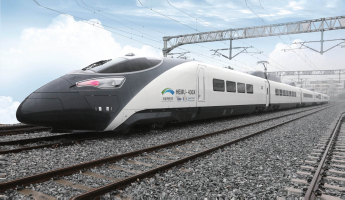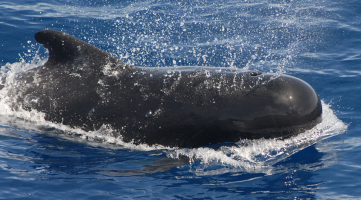Top 10 Fastest Aircrafts
Previously, flying is a dream. However, things have changed since we discovered the fundamentals of flight. We've witnessed the evolution of the aviation ... read more...industry over the years. What the Wright brothers invented has now evolved into a revolutionary practice that has enabled mass transportation to various parts of the world. Many aircrafts now travel faster than the speed of sound. Some even went faster than Mach 2. Today's fastest aircraft demonstrate how far aviation and modern engineering have progressed. Many of these fast planes are military-grade designs. These designs were intended to infiltrate various territories and even deliver bombs. Here are the top ten fastest aircraft in the world.
-
There are certain planes that are almost spaceships. It is hardly surprising that this hypersonic aircraft is regarded as the fastest in the world given that its top speed is Mach 6.72, or roughly 4,520 miles per hour. It was first presented in 1959 and is an experimental high-speed rocket-powered aircraft. The North American X-15 made flights above 80 kilometers in altitude, hence they are already considered astronauts. However, given that two of these missions were over 100 kilometers in height, they can be categorized as space trips.
The X-15 evolved over time. For instance, the aircraft used two rocket engines during its initial flights. Later flights switched to a single XLR99 rocket engine powered by liquid nitrogen and ethanol.
The X-15 is a well-known and important figure in aviation history. Its goal was to fly quickly and high, testing the aircraft and putting the pilots through challenges that might later face astronauts. In addition to being the first piloted aircraft in the world to reach hypersonic speeds, or more than five times the speed of sound, it made the first manned flights to the farthest reaches of space. In the 1960s, the X-15 was a crucial tool in the development of spaceflight, and X-15 pilots who flew at altitudes greater than 50 miles were awarded astronaut wings.
Between 1959 and 1968, three X-15s were built and flew 199 times. The program was a collaboration between the US Air Force, Navy, and NASA, and four of its 12 pilots were Air Force officers. In 1967, one pilot, USAF Maj. Michael J. Adams was killed in an X-15 crash. Neil Armstrong, another X-15 pilot, went on to become the first man to walk on the moon.
Technical Notes
Crew: One
Engine: Reaction Motors XLR-99 of 50,000+ lbs. thrust
Ceiling: 354,200 feet (67 miles)
Maximum speed: 4,520 mph (Mach 6.7)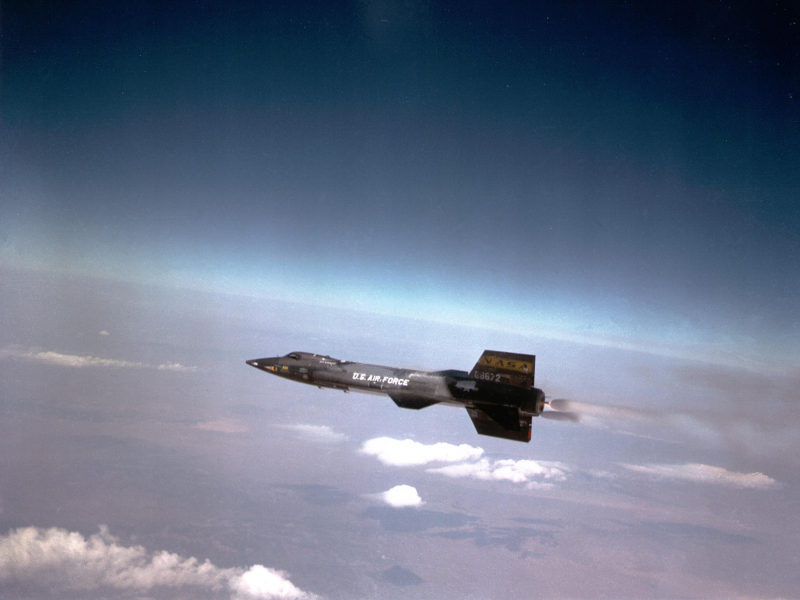
Wikipedia 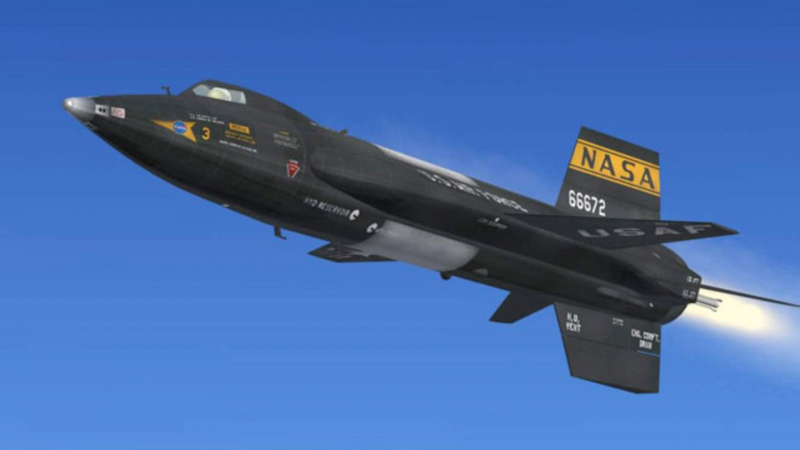
Smithsonian Magazine -
The SR-71, the world's fastest jet-powered aircraft, has operated in more hostile airspace and with greater impunity than any surveillance aircraft in history. The Blackbird represented the apex of Cold War aircraft technical advancements thanks to its performance and operational successes.
The Lockheed SR-71 Blackbird is regarded as a US-operated reconnaissance aircraft. It was primarily derived on the 1960s Lockheed A-12. During missions, it aims to outrun threats. Another feature of the Lockheed SR-71 was its reduced radar cross section.
This aircraft was only produced in small quantities. In fact, only 32 of these aircraft were used. Unfortunately, 12 were killed in an accident, but none were killed in combat with the enemy. This aircraft was decommissioned in 1966. It is one of the fastest aircrafts, capable of speeds of Mach 3 or higher.
During its 24 years of continuous active service with the U.S. Air Force, this Blackbird logged nearly 2,800 hours of flight time. On the aircraft's final flight, on March 6, 1990, Lt. Col. Ed Yeilding and Lt. Col. Joseph Vida broke the speed barrier by traveling from Los Angeles to Washington, D.C., at an average speed of 3,418 kilometers (2,124 miles), in 1 hour, 4 minutes, and 20 seconds. They arrived at Washington-Dulles International Airport at the end of the journey, then handed the plane over to the Smithsonian.
Object Details
Date: 1964
Country of Origin: United States of America
Type: CRAFT-Aircraft
Manufacturer: Lockheed Aircraft Corporation
Physical Description: Twin-engine, two-seat, supersonic strategic reconnaissance aircraft; airframe constructed largley of titanium and its alloys; vertical tail fins are constructed of a composite (laminated plastic-type material) to reduce radar cross-section; Pratt and Whitney J58 (JT11D-20B) turbojet engines feature large inlet shock cones.
Materials: Titanium
Maximum speed: Mach 3.2
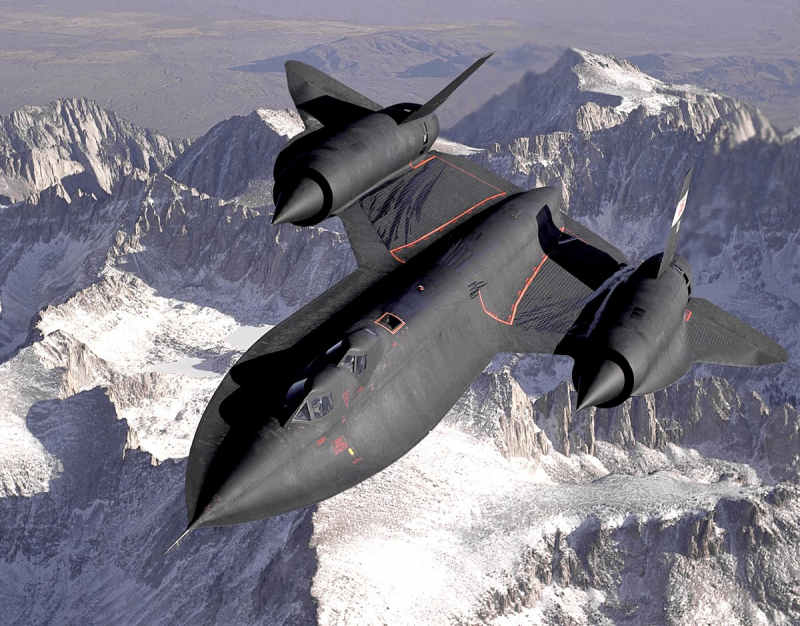
Wikipedia 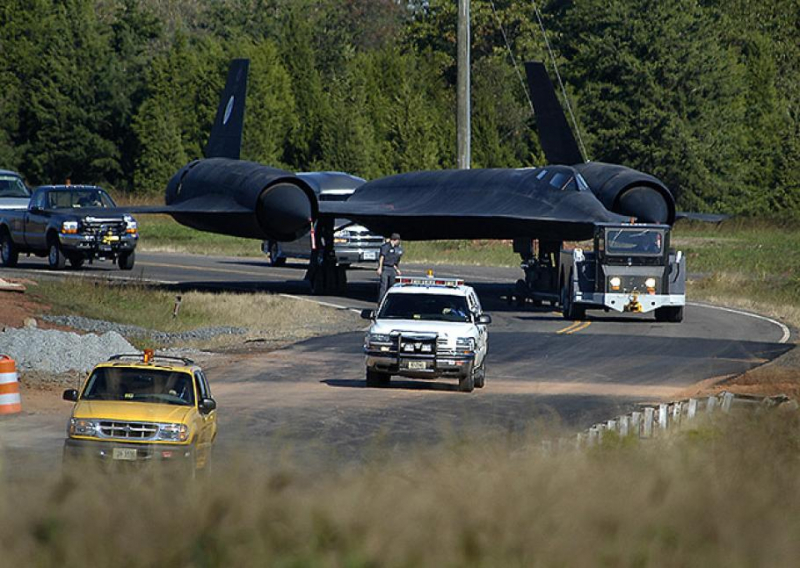
National Air and Space Museum - Smithsonian Institution -
In the 1960s, the YF-12 was designed as a high-altitude, Mach 3 interceptor to counter supersonic bombers. The YF-12A, based on the A-12 reconnaissance aircraft, became the forerunner of the sophisticated SR-71 strategic reconnaissance aircraft.
The first of three YF-12s took to the skies in August 1963. The first and third YF-12s broke several records in May 1965, including a speed record of 2,070.101 mph and an altitude record of 80,257.65 feet. Col. Robert L. "Fox" Stephens (pilot) and Lt. Col. Daniel Andre (fire control officer) received the Thompson Trophy in 1965 for their speed record flight.
Despite the F-12 interceptor program coming to an end in early 1968, the aircraft functioned admirably. The cancellation was a result of several factors, including high expenditures, the ongoing war in Southeast Asia, and a lesser priority given by the US to air defense.
For a collaborative USAF/NASA examination of supersonic cruise technology, the aircraft on display - the second one made - was returned from storage in 1969. It was transported to the museum in 1979 and is the only YF-12A still in existence (the first YF-12A was damaged beyond repair after a landing mishap, and the third YF-12A was destroyed after the crew ejected to escape an inflight fire).Technical Notes
Armament: Three Hughes AIM-47A missiles
Engines: Two Pratt & Whitney J58s of 32,000 lbs. thrust each (with afterburner)
Crew: Two
Range: 2,000+ miles
Service ceiling: Above 80,000 feet
Weight: 127,000 lbs. loaded
Maximum speed: Mach 3+
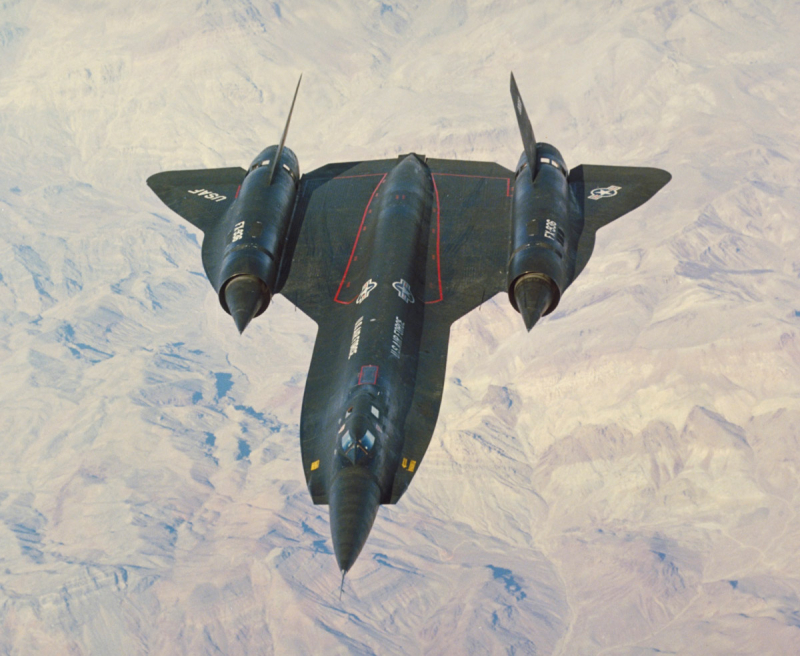
Wikipedia 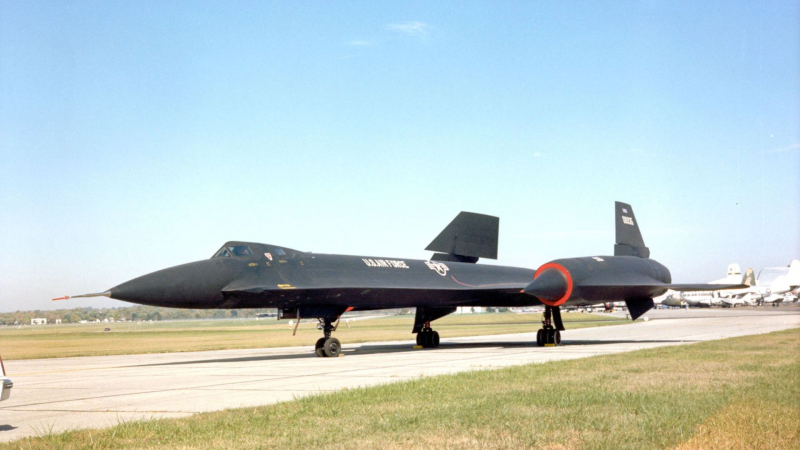
National Museum of the USAF -
The futuristic XB-70A was initially designed in the 1950s as a high-altitude, nuclear strike bomber with a Mach 3 flight speed (three times the speed of sound), rendering any possible adversary defenseless.
But by the start of the 1960s, brand-new Surface-to-Air Missiles (SAMs) posed a danger to the capacity of fast, high-altitude bombers to survive. Intercontinental Ballistic Missiles (ICBMs), which are less expensive, were also going into service. As a result, the pricey B-70 bomber program was abandoned in 1961 before any Valkyries were finished or sent into service.Despite this, the US Air Force purchased two XB-70As to test the aerodynamics, propulsion, and other characteristics of large supersonic aircraft. The first XB-70A, which is on display here, flew in September 1964 and reached Mach 3 in October 1965. The second Valkyrie first flew in July 1965, but it was destroyed in June 1966 due to an unintentional mid-air collision. The third Valkyrie was never finished.
The first XB-70A airplane flew and collected valuable test data in the research program until it was donated to the museum in 1969.Six engines power the XB-70 Valkyrie. It can accelerate a 240,000 kilogram aircraft to three times the speed of sound. As a result, the aircraft's surroundings become hot. Temperatures in some areas could even reach 330°C.
Its speed serves two distinct purposes. One, it is designed to travel at three times the speed of sound in order to escape Soviet aircraft. Second, it was designed to withstand a nuclear blast. Unlike the other planes on our list, only two were built. Furthermore, this model has already been retired.Technical Notes
Engines: Six General Electric YJ93s of 30,000 lbs. thrust each with afterburner
Range: 4,288 miles
Service ceiling: 77,350 feetLength: 185 feet, 10 inches
Height: 30 feet, 9 inches
Weight: 534,700 lbs. loaded
Maximum speed: 2,056 mph (Mach 3.1) at 73,000 feet
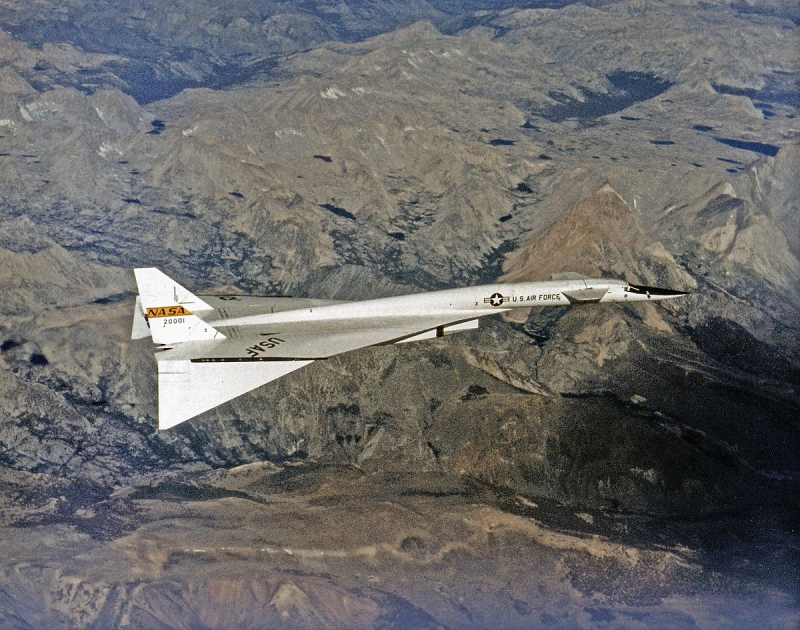
Wikipedia 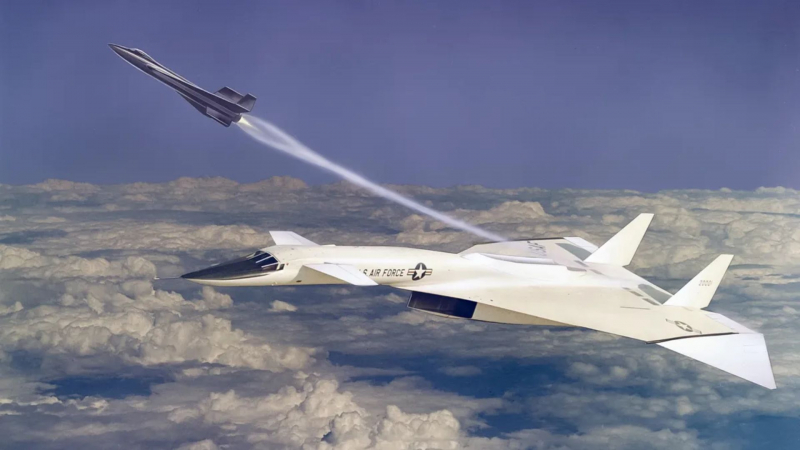
CNET -
The Bell X-2, also known as the Starbuster. This is a research aircraft, as opposed to the other aircrafts on our list. Nonetheless, it deserves to be counted among the world's fastest aircraft. Its goal was to investigate the effects of flying at Mach 2-3.
It was ahead of its time when it was created in 1945. It used a rocket engine. Its goal is to investigate common aerodynamic heating problems that may occur during high-speed flights. This aircraft was not created in a short period of time. Instead, it took some time due to the need for temperature resistant materials and technology that could meet the requirements of this specific aircraft.
The X-2 is regarded as a pioneer on numerous fronts. In particular during those years, it has expanded the potential for manned flight. It is also the first airplane manufactured in the US to use a rocket engine.
Only two Bell X-2s have ever been produced. But while it was in operation, it gave scientists the information they needed to create the aircrafts we use today. In actuality, the aircraft's stability and control were the main issues they had to deal with as they got closer to Mach 3.Technical Notes
Weight: 5,600 kg
Length: 12 m
Engine type: Rocket engineMaximum speed: Mach 2-3
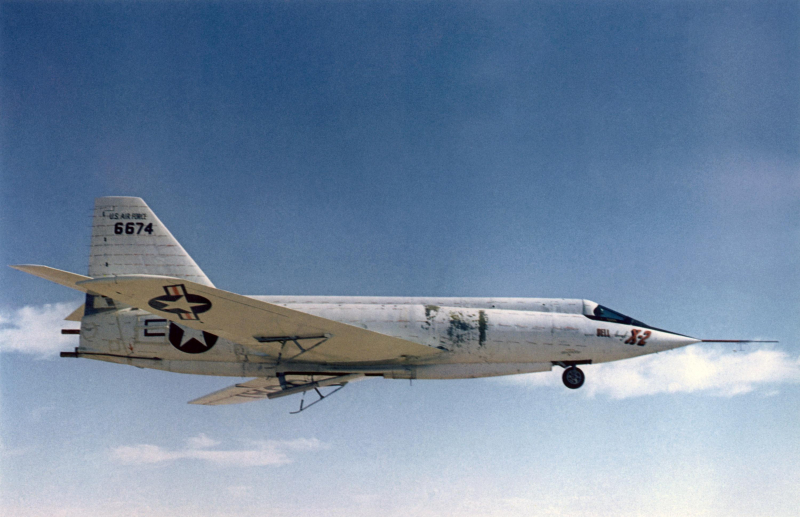
NASA 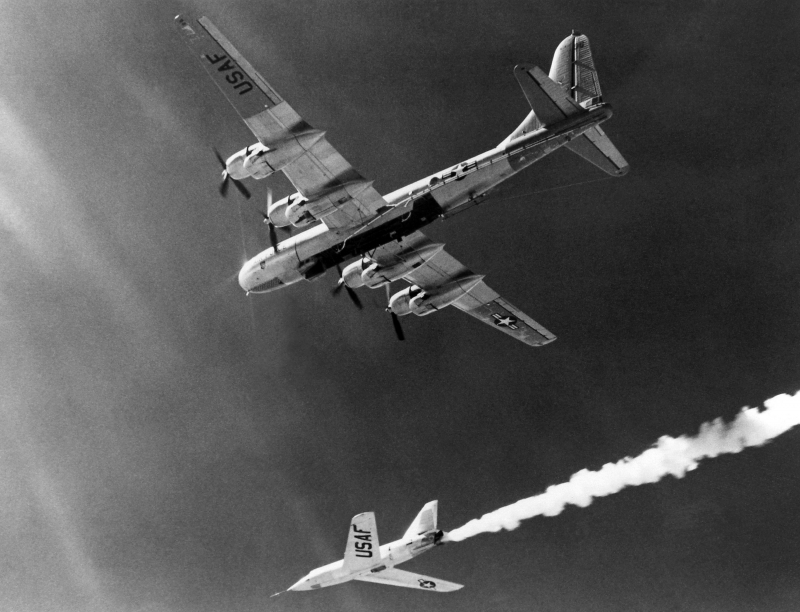
NASA -
It is one of the quickest military aircraft ever created and is also known as the Foxbat. It is an illustration of Soviet aircraft technology's superiority. It is a rare airplane that used stainless steel in its construction. By 1964, the first ever prototype was airborne. It eventually went into service in 1970 after a few years. The MiG-25's maximum practical speed is Mach 2.85.
It boasts a good deal of armament in addition to being one of the world's fastest aircrafts. These are features of the MiG-25 aircraft that you may expect, including a potent radar and missiles.
Its wings give the impression that it is extremely maneuverable. It was originally captured on camera at the same time when the US was attempting to create an airplane that might be deployed in the Vietnam War.Technical Notes
Wing span (metric): 14.01 m
Length (metric): 19.75 m
Height (metric): 6.10 m
Powerplant: 2 x Tumansky R-15B-300 afterburning turbojets
Engine Model(s): Tumansky R-15Maximum speed: Mach 2.83
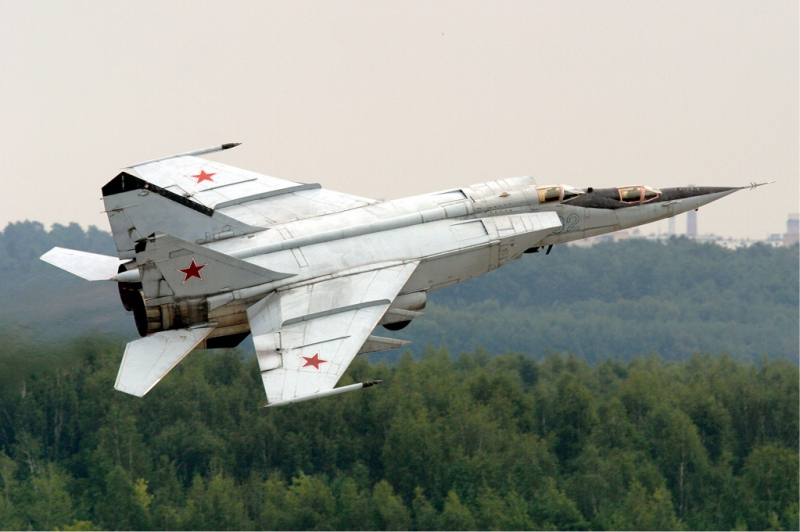
Wikipedia 
Wallpaper Abyss - Alpha Coders -
The Soviet Union produced the Mikoyan MiG-31 interceptor aircraft, also referred to as Foxhound. The MiG-25 was meant to be replaced by it. The Mikoyan MiG-31 was still in use by the Russian Air Force and the Kazakh Air Force after the fall of the USSR. The MiG-31 is anticipated to be used by the Russian Defense Ministry until 2030.
The MiG-31 was special because it could fly at both high and low altitudes while traveling at supersonic speed, largely because of its potent twin engines. From 1975 through 1994, this airplane was manufactured. More than 500 units were built in total, according to estimates. Its speed at a high altitude is 2.83 mach. It can reach a top speed of 1.23 mach when flying at low altitude.
The MiG-31 "Foxhound" was created as a spin-off of the record-breaking MiG-25 "Foxbat." The Foxbat was a fast aircraft, but it was not agile. It was a simple airframe designed to intercept incoming aerial threats by using its own powerful engines, an equally powerful radar system, and long-range missiles to gain altitude, accelerate over long distances, and unleash a lethal payload on a target. The MiG-25, on the other hand, lacked adequate low-altitude control, was strictly a high-altitude weapon, and relied on ground-based radar for intercepts. The MiG-31, while resembling the MiG-25 on the outside, was essentially an all-new aircraft with more powerful engines, low-altitude lethality, and a second crewman in the rear cockpit to manage the expanded radar suite. The Cold War-era MiG-31 "Foxhound," which was developed in the 1980s, is still in use today and holds the record for being the heaviest operational interceptor in the entire world, weighing in at over 61.7 tons.
Technical Notes
Wing span (metric): 13.50 m
Length (metric): 22.70 m
Height (metric): 6.20 m
Powerplant: 2 x 151,9 KN Soloviev D-30F6 turbofans.
Engine Model(s): Soloviev D-30Maximum speed: Mach 2.83
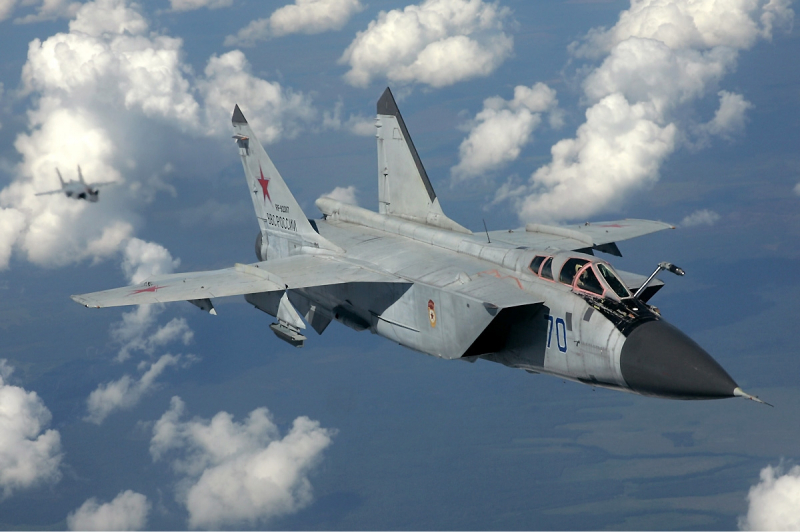
Wikipedia 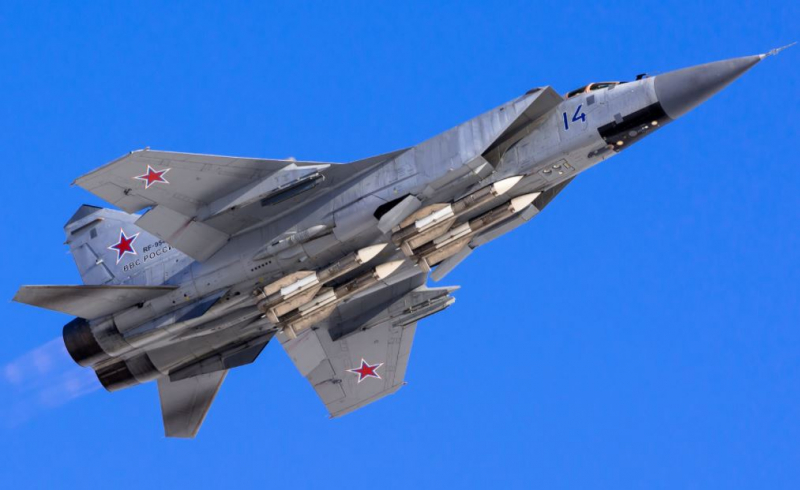
Thai Military and Asian Region - WordPress.com -
It has taken on numerous roles over its various incarnations. In various circumstances, it has served as an interdictor, fighter bomber, and strategic bomber. The F-111, however, makes our list of the fastest airplanes of the present because of its capacity to attain supersonic speed.
The F-111 first appeared in the United States in the 1960s. The Royal Australian Air Force ordered this type of aircraft in the early 1970s. Several technologies, such as afterburning turbofan engines and sweep swings, have been pioneered by the F-111 over the years. It also has an automated terrain-following radar, which is useful during low-level, high-speed flights. The F-111 has a top speed of 2.5 Mach.
This aircraft was retired in the 1990s. Since its deployment, the F-111 has been produced in 563 units for the Royal Australian Air Force and the US Air Force.
Technical Notes
Armament: One 20mm M61A1 Vulcan cannon (later replaced by AN/AVQ-26 Pave Tack infra-red targeting pod), plus a mix of up to 24 conventional or nuclear weapons
Engines: Two Pratt & Whitney TF30-P-111s of 25,100 lbs. thrust each with afterburner
Range: 2,971 miles
Span: 32 ft. swept, 63 ft. extended
Length: 73 ft. 6 in.
Height: 17 ft.
Maximum speed: Mach 2.5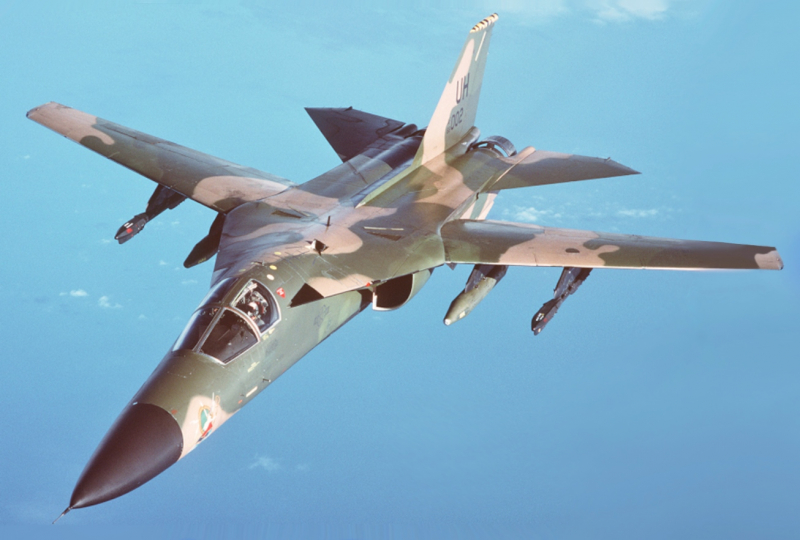
Wikipedia 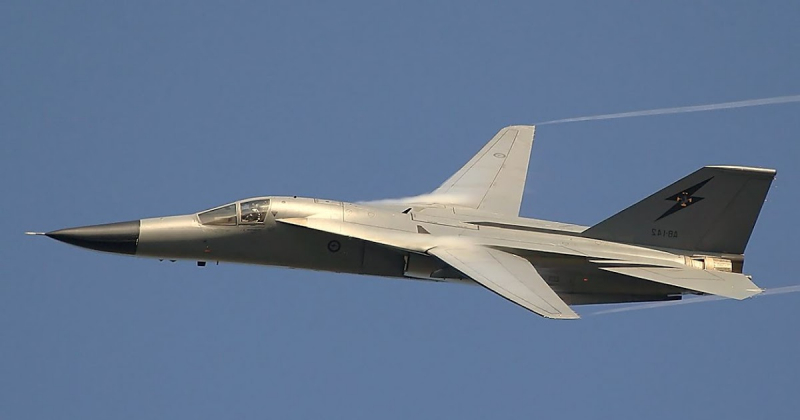
Military Media -
Sukhoi Su-27, also known as the (NATO designation) Flanker, is a Russian air-superiority fighter plane that was introduced into the Soviet Union's air forces in 1985 and is now one of Russia's, Ukraine's, Belarus', Kazakhstan's, Uzbekistan's, Indonesia's, India's, China's, and Vietnam's premier fighters. The plane is manufactured under license in China and India.
In direct response to the American F-15 Eagle fighter's development, work on the Su-27 started in 1969 at the Sukhoi design bureau. The Su-27 was gradually transformed by principal designer Mikhail Simonov into what was perhaps the best air-superiority platform of the 20th century, despite early prototypes being thought to be inferior to the F-15. Similar to its predecessor from the Cold War, the Su-27 evolved into a sizable, long-range interceptor with twin turbofan engines and impressive agility for its bulk. It has a service ceiling greater than 18,000 meters (59,000 feet), a flight range greater than 3,000 kilometers (1,800 miles), and the ability to fly at speeds greater than twice the speed of sound. Radar-guided or infrared-homing ("heat-seeking") air-to-air missiles, unguided air-to-ground rockets, conventional and cluster bombs, and a gun firing 30-mm exploding shells are among the weapons.
Technical Notes
The most fuel-efficient speed: 1,350 km/h
Length: 22 m
Wingspan: 15 m
Flight range : 3,530 kmMaximum speed: mach 2.35
Haci Productions's Channel 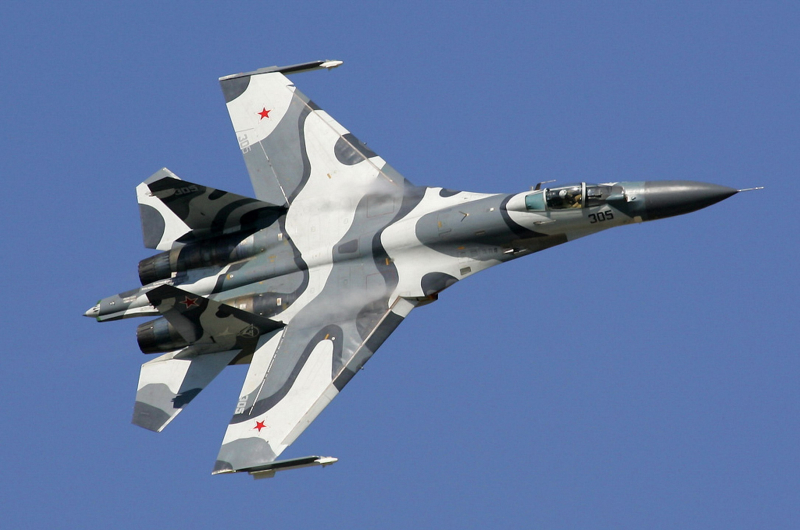
Wikipedia -
The F-15 Eagle is an all-weather, extremely maneuverable tactical fighter designed to give the Air Force air superiority over the battlefield.
The Eagle achieves air superiority through a combination of unprecedented maneuverability and acceleration, range, weapons, and avionics. It is capable of breaching enemy defenses and outperforming and outfighting any current enemy aircraft. The F-15 has electronic systems and weaponry that allow it to detect, acquire, track, and attack enemy aircraft while flying in friendly or enemy airspace. The weapons and flight control systems are designed so that air-to-air combat can be performed safely and effectively by a single person.
The F-15's excellent acceleration and maneuverability are made possible by its low wing loading and high engine thrust-to-weight ratio. A crucial component of maneuverability is low wing loading, which, when combined with a high thrust-to-weight ratio, allows an aircraft to turn quickly without losing speed.
The F-15 differs from other fighter aircraft thanks to its multi-mission avionics system. Advanced radar, inertial navigation, flying instruments, ultrahigh frequency communications, a tactical navigation system, and an instrument landing system are all included. It also has a head-up display. Additionally, it has a tactical electronic warfare system mounted internally, a "identifying friend or foe" system, a set of electronic countermeasures, and a main digital computer.The integrated avionics system projects all critical flight information onto the pilot's windscreen via the head-up display. This display, which is visible in all lighting conditions, provides the information required to track and destroy an enemy aircraft without having to look down at cockpit instruments.
The F-15's adaptable pulse-Doppler radar system can scan low- and high-flying targets without being distracted by background noise. In close proximity and at altitudes as low as treetop level, it is capable of detecting and tracking small, high-speed objects and aircraft at distances beyond optical range. The central computer receives target data from the radar for efficient weapon delivery. The head-up display displays adversary aircraft that are automatically acquired by the radar during close-range dogfights. The electronic warfare system of the F-15 offers automatic countermeasures and threat warnings for specific threats.
Technical Notes
Power plant: Two Pratt & Whitney F100-PW-100, 220 or 229 turbofan engines with afterburners
Thrust: (C/D models) 23,450 pounds each engine
Wingspan: 42.8 feet (13 meters)
Length: 63.8 feet (19.44 meters)
Height: 18.5 feet (5.6 meters)
Weight: 31,700 pounds
Ceiling: 65,000 feet (19,812 meters)Range: 3,450 miles (3,000 nautical miles) ferry range with conformal fuel tanks and three external fuel tanks
Crew: F-15A/C, one; F-15B/D/E, two
Armament: One internally mounted M-61A1 20-mm, six-barrel cannon with 940 rounds of ammunition; four AIM-9 Sidewinder and four AIM-120 AMRAAMs or eight AIM-120 AMRAAMs, carried externally.
Maximum speed: 1,875 mph (Mach 2 class)
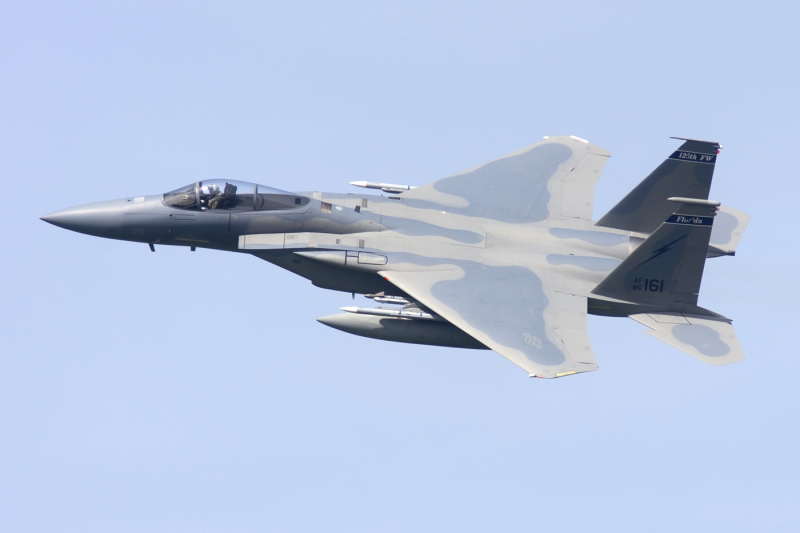
Wikipedia 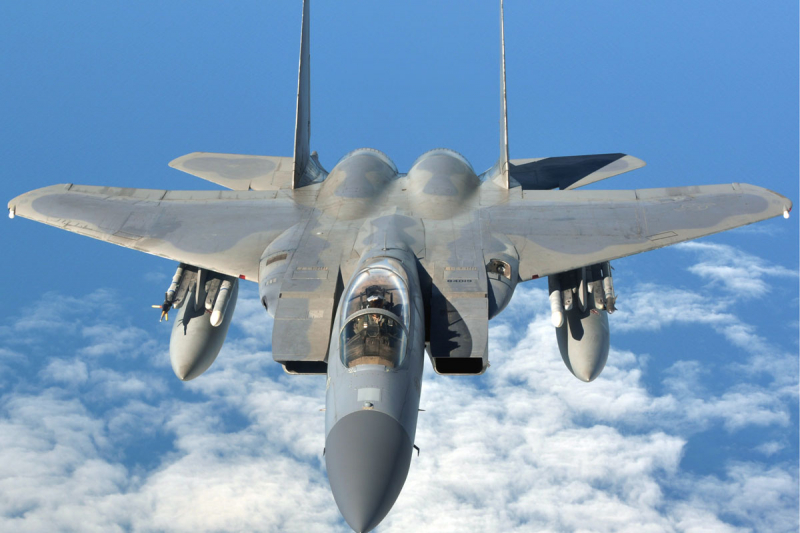
nld.com.vn













